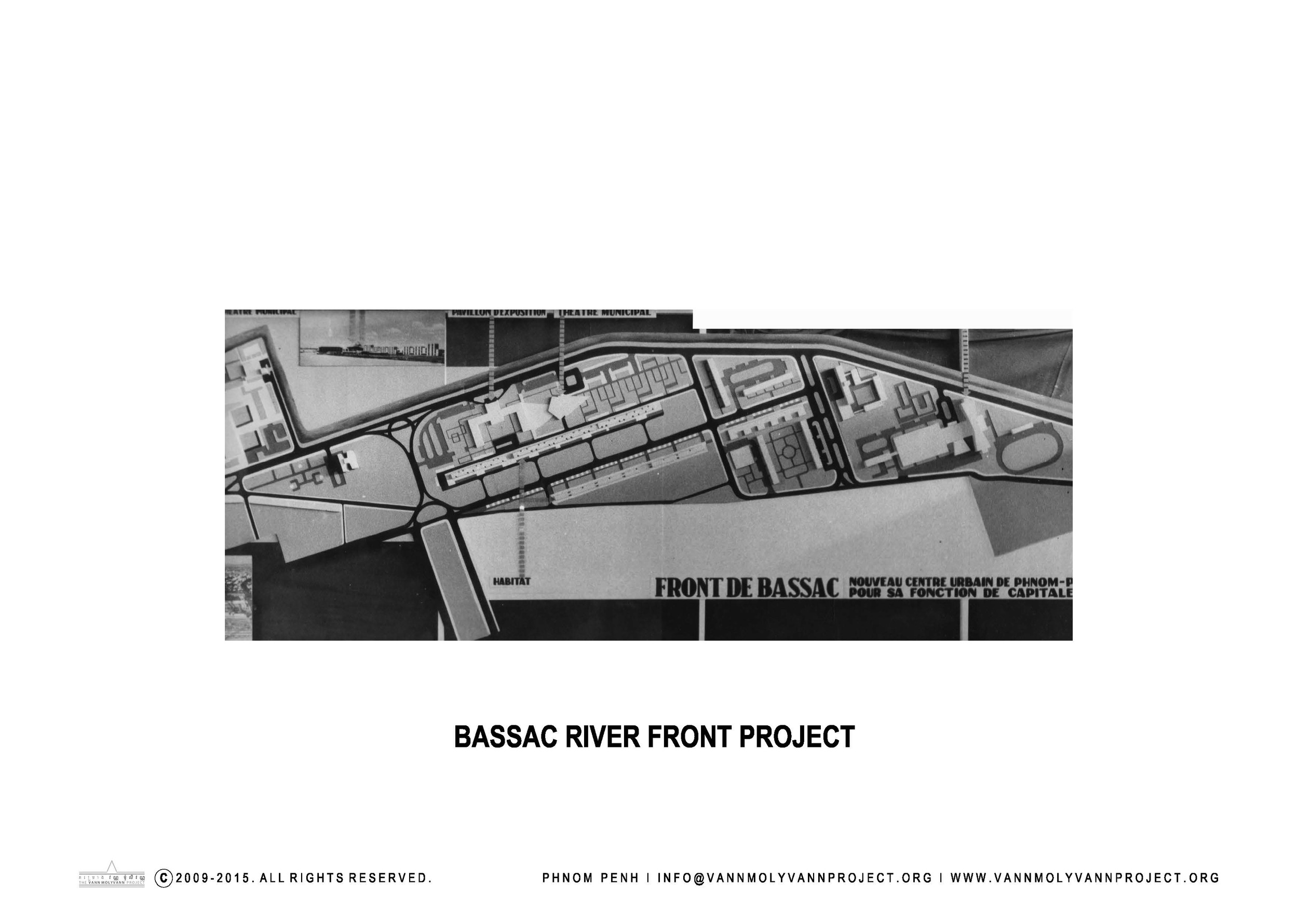Bassac Riverfront Project
Located on reclaimed land near to the confluence of the Tonle Sap, Mekong and Bassac rivers, the Bassac Riverfront Complex is an ambitious cultural precinct constructed from c.1962 to 1968. Architects and engineers who worked on the Bassac complex include Gerald Hanning, Vladimir Bodiansky, Robert Hansberger, Lu Ban Hap, and Vann Molyvann.
At the time of the completion of the Preah Suramarit National Theater in 1968, the Bassac Riverfront Complex also included several Exhibition Halls, a conservatory for dance and theater-makers, a Water Sports Complex, and three apartment buildings, all set in landscaped gardens. The apartment buildings, which were the largest structures in the precinct, included the Bassac Municipal Apartments (known as the White Building), the Olympic Village Apartments (known as the Gray Building), and another building designed by Henri Chatel. Other structures planned for the precinct, but never completed, included a museum to celebrate King Sihanouk’s role in Cambodia’s independence from French colonial rule.
Considered a key achievement of the Sangkum Reastr Niyum regime, the Bassac Riverfront Complex was often featured in films and photographs made by Prince Sihanouk to celebrate Cambodia’s modernization during the post-independence period (1953-70). Foreign dignitaries visiting Phnom Penh were regularly taken to visit the precinct as part of an official tour of the capital.The location of the Bassac Riverfront Complex can be understood in relation to the National Sports Complex and the Independence Monument. The three structures are located along the Preah Sihanouk Boulevard, which runs from east to west across the city center. As such, these precincts shifted the geographic and symbolic center of the city south from its historic origins at Wat Phnom in the city’s north, later complemented by the situating of the Royal Palace south of Wat Phnom along the Tonle Sap river.
In the years after 1979, the Bassac Riverfront Complex has undergone significant alterations. Some structures, such as the Water Sports Complex and the Preah Suramarit National Theater, have not survived. Others, such as the Gray Building, have been significantly renovated, and the White Building has fallen into disrepair. Much of the parklands have been claimed for new construction, including both informal housing and officially approved shophouse-style buildings.



